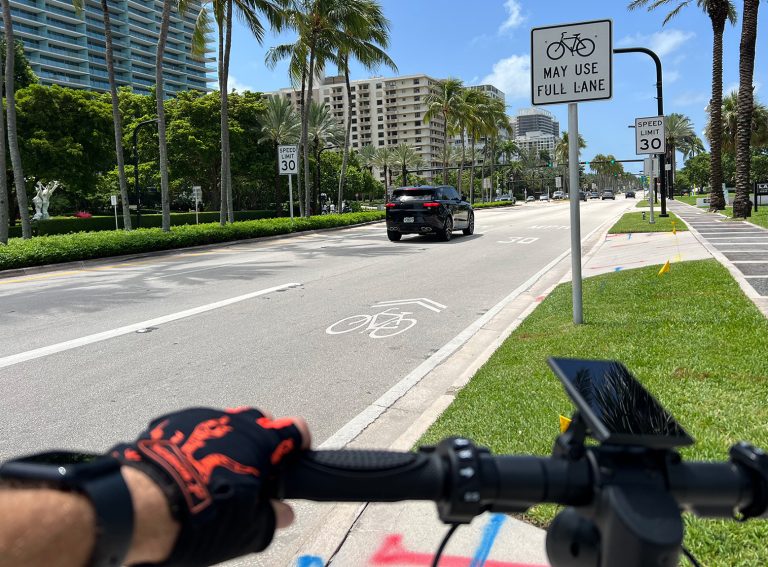Author: Benjamin Hindson, Digital Economy Chief Commercial Officer, Aon
Battery safety in the micromobility sector has become increasingly high profile with recent media stories relating to house fires caused by malfunctioning lithium-ion batteries on e-bikes or e-scooters.
According to the London Fire Brigade, fires caused by lithium-ion batteries represent the “fastest growing fire risk in London” with the emergency services called out to 116 fires in London in 2022 – 87 for e-bikes and 29 for e-scooters.
Many might think this safety record reflects the teething problems from the development of new technology, but lithium-ion batteries have been around for decades.
Household items such as laptops, smartphones, and cordless vacuum cleaners have been operating with lithium-ion for some time without these high-profile incidents being seen in the micromobility sector. Lithium-ion technology is tried and tested, which points to possible issues relating to the manufacture of the batteries and how they are being used and managed.
For manufacturers of micromobility vehicles and the companies that operate micromobility schemes, better management and mitigation of the potential risks is critical if public confidence in the use of lithium-ion powered micromobility is to be maintained. Fortunately, there are steps that can be taken to make sure the overall risks are greatly reduced.
Thermal runaway threat
Lithium-ion batteries are vulnerable to a phenomenon known as ‘thermal runaway’ which refers to a chain reaction occurring within the battery, where damage or failure of a single cell can cause other cells around it to heat up.
The initial damage to a cell could have stemmed from thermal, mechanical or electrical abuse – the battery might have been physically punctured for example, or charged incorrectly. But as neighbouring cells also become damaged by the heat, a reaction takes place that can potentially cascade leading to an uncontrolled release of energy stored and resulting in a possible fire or explosion. Lithium-ion batteries used for e-scooters of e-bikes are of course more powerful than those used in laptops or other household devices, so any malfunction is likely to cause a much bigger problem.
Beyond the physical damage to property risk posed by a thermal runaway event, it is important to consider that there is also a potential liability risk given a fire or explosion could not only damage third party property or cause injury, but the chemistry involved can lead to the creation of toxic gases. Such gases have led to recommendations for thousands of residents to close all windows and stay at home when thermal runaway events have occurred – such as in 2017 at a lithium-ion battery energy storage site near Brussels.
Source high quality batteries
From a risk management perspective, heavy users of lithium-ion batteries need to be doing all they can to minimise these risks.
It’s important to emphasise that there is a difference between privately owned, poorly constructed lithium-ion battery products and ones that have been properly tested and risk managed by responsible micromobility operators who will be adhering to the necessary safety protocols. But if your organisation is sourcing and using lithium-ion batteries, it is vital that all equipment is selected from reputable manufacturers and is designed/tested to the applicable codes to minimise the exposure from defects that could trigger a catastrophic event.
Ensure the storage is safe
As well as sourcing batteries, storage is just as important. Micromobility operators will be charging large numbers of lithium-ion batteries, so having the right storage set up is vital.
It’s known that in some metropolitan areas, battery storage and charging is taking place in higher risk areas – even in sites underneath railway tracks – which could create a much greater problem if there was a fire or explosion. Charging sites should also be designed in a way that physically separates the batteries so that any thermal runaway event is contained within one area, rather than spreading across a whole site.
Where sites have already been constructed, or there are limitations in space, there are solutions to effectively break up the density, such as physical barriers. For barriers to be effective, they need to be both fire and blast resistant, and fire rated for several hours. However, the insurance market still views a physical gap as a better form of containment than any form of barrier at this stage.
No room for complacency
Approximately two billion lithium-ion cells are made every year and the instances of them leading to a fire or incident is small in comparison to their overall use. But that should not lead to complacency for any users or manufacturers in the micromobility space. As seen, the reputational damage from failure can easily start to outweigh the reality, so keeping on top of the risk management of lithium-ion batteries should be an absolute priority.
We help micromobility businesses both in the prevention of incidents relating to lithium-ion batteries – such as providing advice on the storage of batteries, or help if a product has to be recalled – as well as offering insurance solutions should an incident lead to a fire or explosion.
Whilst care has been taken in the production of this article and the information contained within it has been obtained from sources that Aon UK Limited believes to be reliable, Aon UK Limited does not warrant, represent or guarantee the accuracy, adequacy, completeness or fitness for any purpose of the article or any part of it and can accept no liability for any loss incurred in any way whatsoever by any person who may rely on it. In any case any recipient shall be entirely responsible for the use to which it puts this article.
This article has been compiled using information available to us up to 05/06/23.
Aon UK Limited is authorised and regulated by the Financial Conduct Authority. Registered in England and Wales. Registered number: 00210725. Registered Office: The Aon Centre, The Leadenhall Building, 122 Leadenhall Street, London EC3V 4AN. Tel: 020 7623 5500.
FP.AGRC.1315.RR








